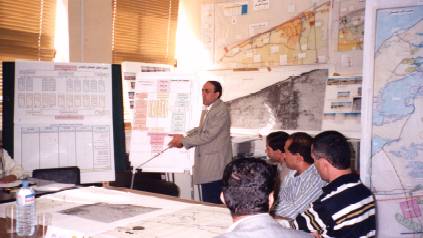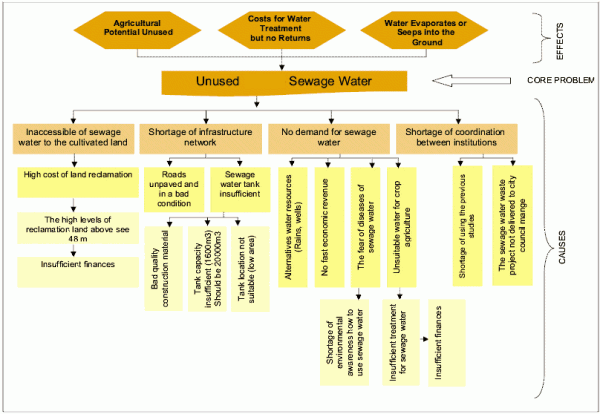Problem Tree Analysis - Example: Planning for Utilisation of Unused Treated Wastewater
 |
A sewerage treatment plant was built at the periphery of in order to treat all waste water from the city. However, no clear plans were developed as to what should be done as far as the treated waste water is concerned. Ironically, the waste water was being treated but then the resulting water was not being used at all in an area where water is a very scarce resource. It is quite common for planners who only view problems from the purely technical perspective often forget important additional elements. They often oversee additional causes and effects that need to be considered in their plans, such as the actual use of the treated waste water. The Planning Unit was requested to prepare a proposal on the most effective use that could be made of the waste water. In a first step, the planners analysed the causes as to why the waste water was not being utilised. This analysis was done using the problem tree analysis. In addition, field surveys were carried out to map the location and the potentials that exist in the area under review. The information generated provided the basis for elaborating a realistic proposal on the optimal use of the treated waste water.
Photo 2: Problem Tree Analysis |
||||||||||||||||
Procedure used:
|
|||||||||||||||||
 |
Conclusion: The result of the exercise was that decision makers were presented with a complete overview of the problems involved in the unused treated waste water situation. The causes, effects and possibly remedial solutions were thus identified more precisely. The decision-makers could then select the most appropriate solution. |

